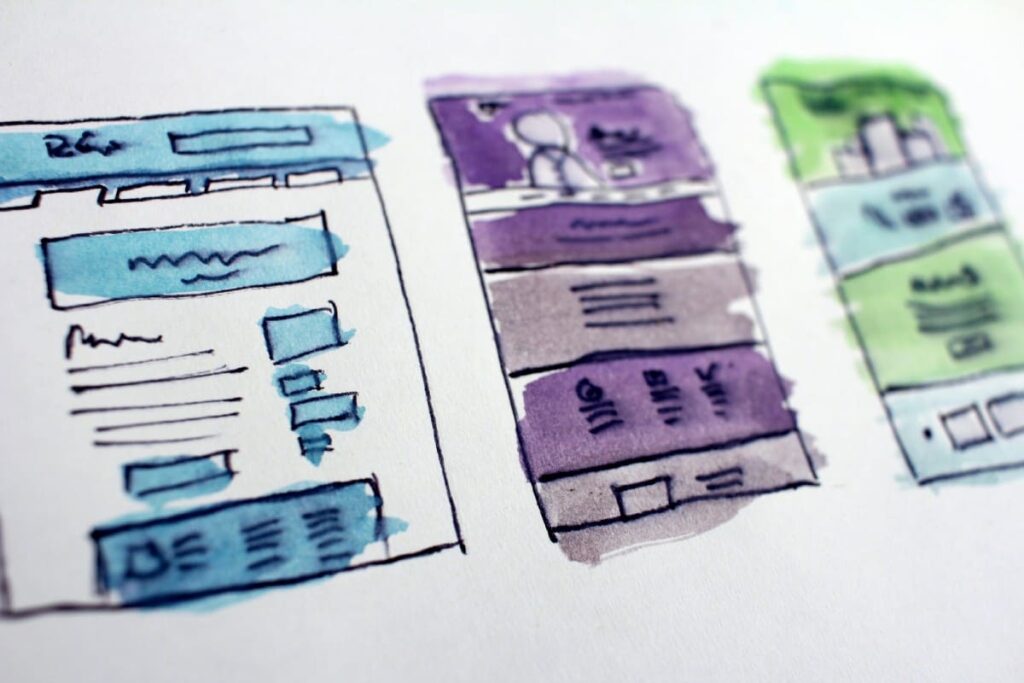It’s been a while since designers have incorporated Design Thinking into their practices. But this still hasn’t been translated into their choice of work tools.
From customer journey mapping to prototyping and product testing, many solutions on the market guide and facilitate their creative process.
With their interactive interfaces, these platforms have a great way of making visual what are designers’ daily practices: empathizing with customers, brainstorming new product ideas, and prototyping step-by-step.
Here are the best software you can find to guide you step-by-step through the design thinking process.
Best Journey-mapping platforms
Sprintbase
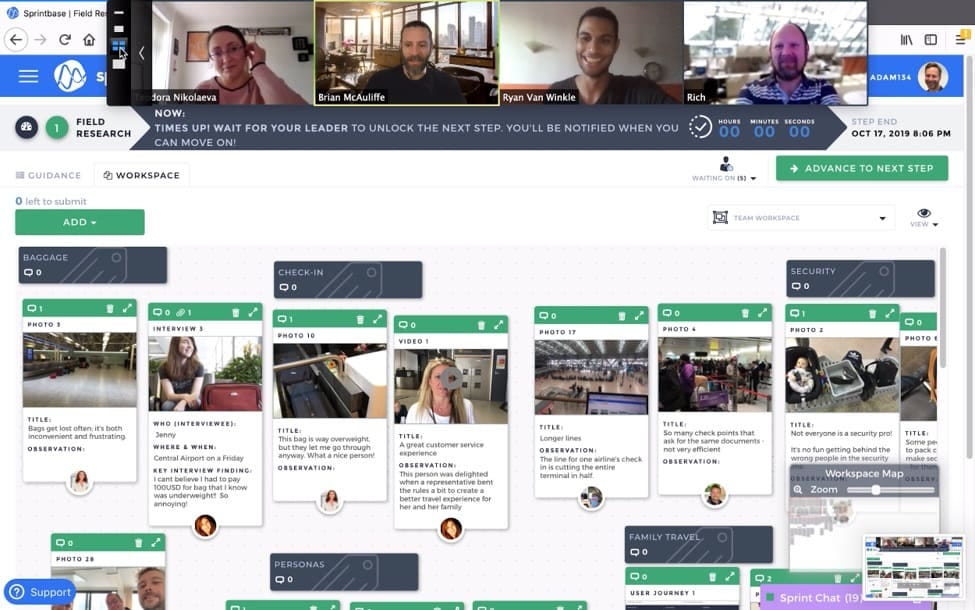
Sprintbase is a platform encompassing each essential step of design thinking (observation, ideation, prototyping) in a structured workflow. Designers can base themselves on a precise framework through their visualization, problem-solving, and prototyping work. Via a visual and interactive interface, they are encouraged to connect with consumers’ emotional problems and suggest solutions that precisely fit their users’ needs.
Smaply
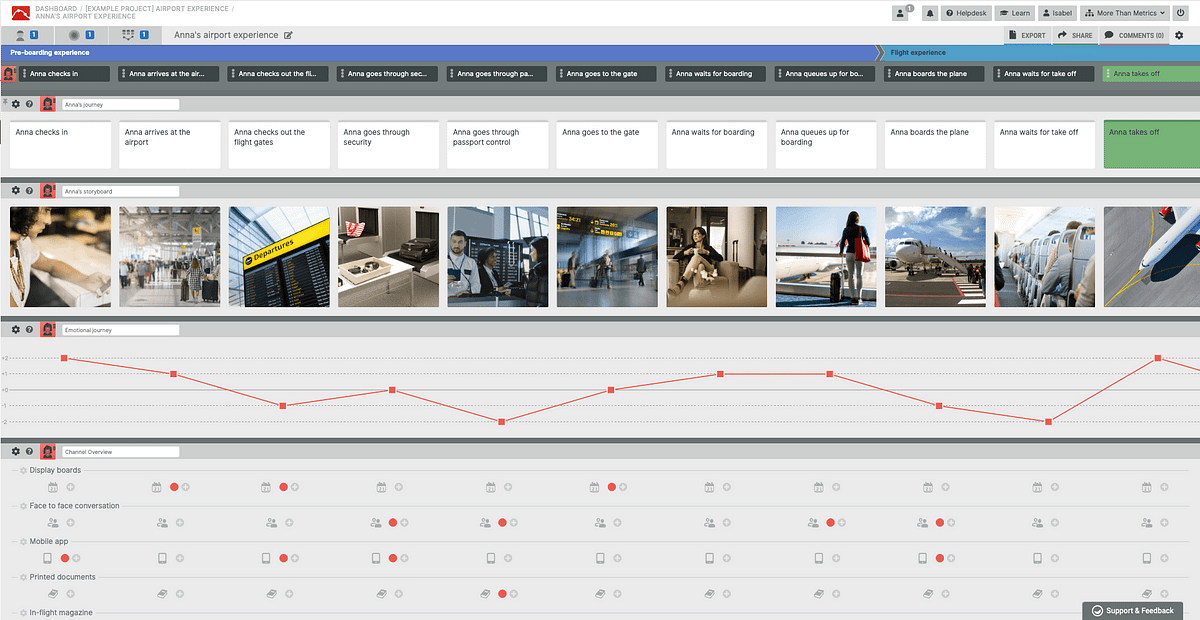
Smaply is a design thinking platform that mainly focuses on journey mapping and persona building. With intuitive visualization charts, designers can extensively detail the pain points and feelings of their users at each stage of their journey. They can also create detailed persona cards, with images, quotes, and narratives that go beyond mere caricatures. Smaply takes design thinking literally: as a way to create a living and creative picture of your users.
Flowmapp
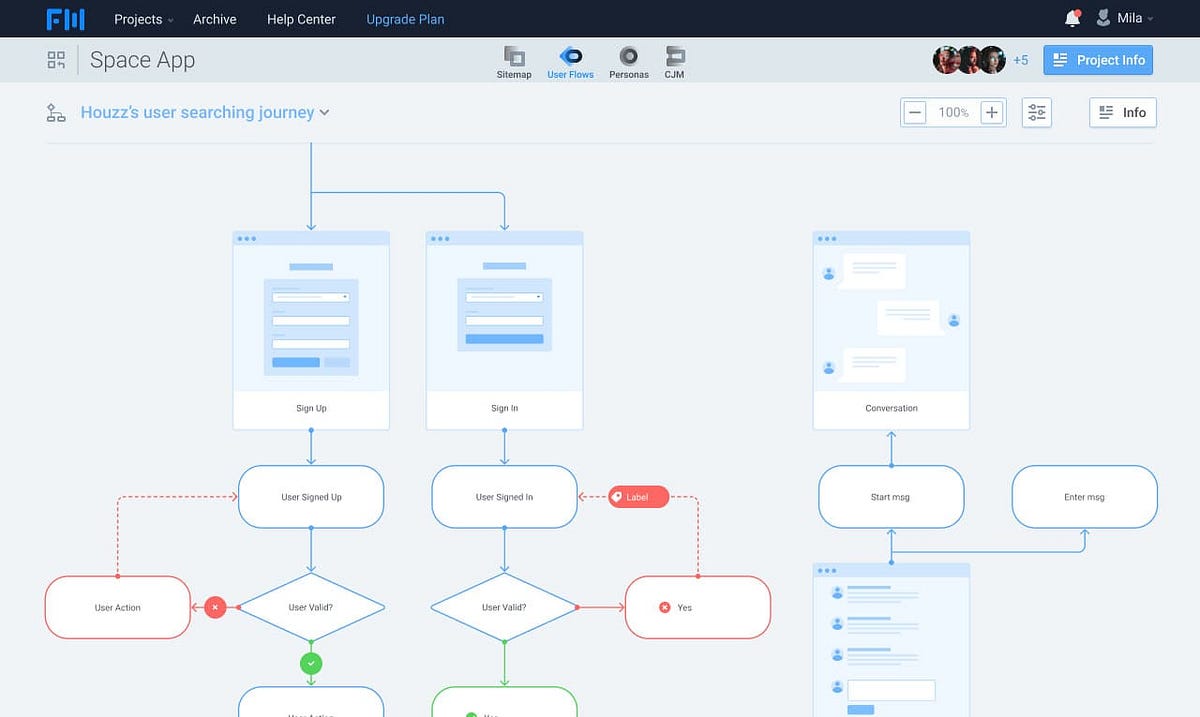
More collaborative than the last two, Flowmapp provides interactive and customizable charts to capture your users on the move. Its ready-to-use customer journey templates help you and your team illustrate the needs and pain points in your customer journey, according to the pursued goal (retention, loyalty, user experience). Its persona charts give you all the tools and structure to build a beautiful and true-to-life customer record. There is nothing like it to have a visual and exhaustive overview of your users’ lives.
Product testing solution
User-Testing
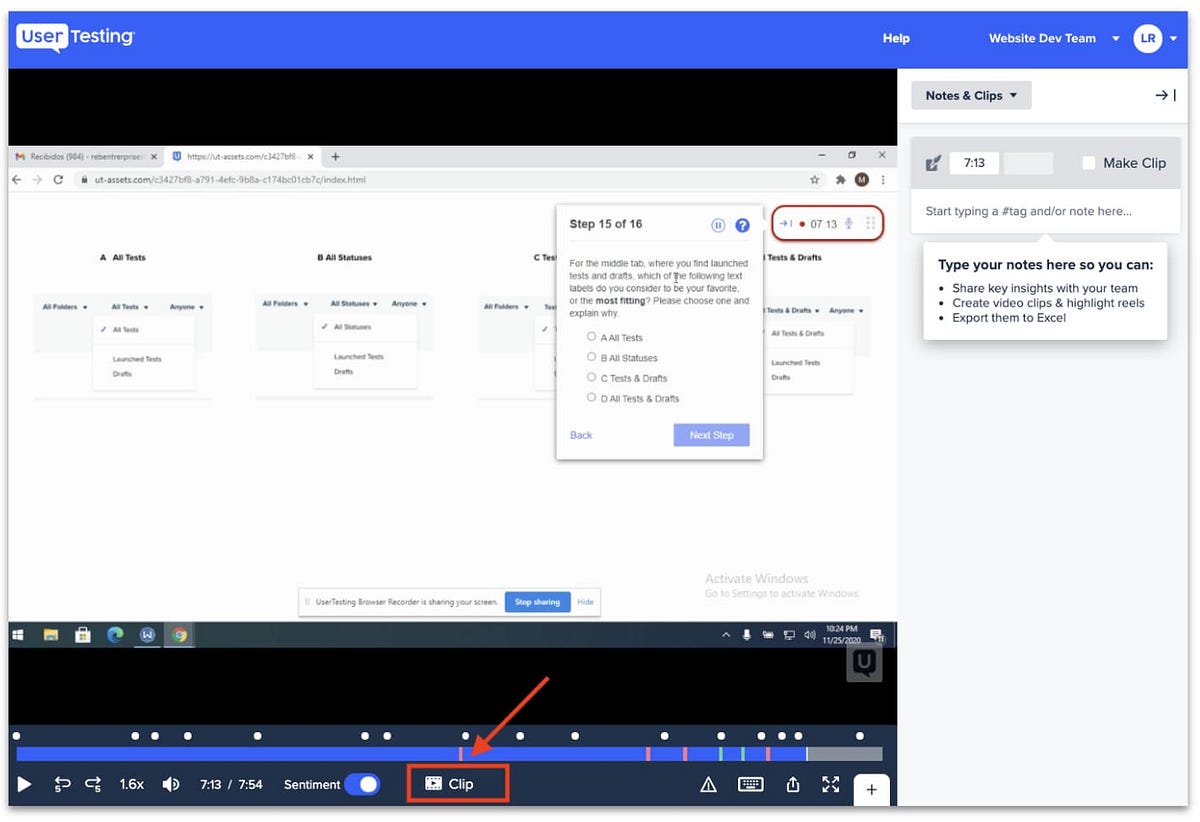
User-Testing is one of the leading platforms for narrative customer experience. It allows designers to have face-to-face interactions with users trying out their products and expressing their frustrations and reactions live. They can closely follow the user’s experience, track each pain point and even ask them questions on the spot. It’s the perfect tool to go deep into the emotions of your customers.
Maze
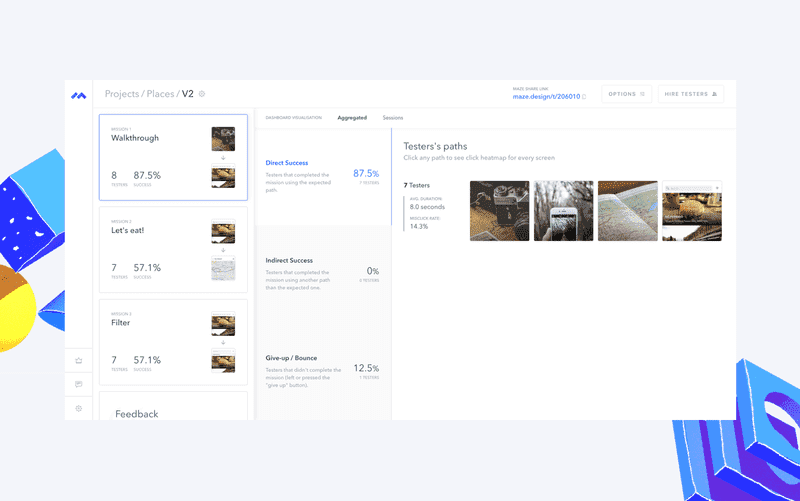
Maze puts a versatile and engaging testing tool in the hands of designers. Whether through a ready-to-use prototype, a text-based test, or an intuitive survey, the platform helps them gather deep insights to refine their product design. As tests are based on users’ first impressions and reactions, designers can benefit from accurate user experience and customer sentiment metrics. All this to create the product that resonates most accurately with your users.
TypeForm

TypeForm replaces the boring, monotonous forms that you never managed to fill out. Designers can add visual effects and interactive questions to their feedback and recommendation surveys. They can thus engage in a real conversation with their customers while scaling the feedback process. TypeForm also provides a video-based form, as designers can record their questions and add engaging call-to-actions. With TypeForm, you make sure to get enough feedback to figure out an amazing product!
Prototyping software
Marvel
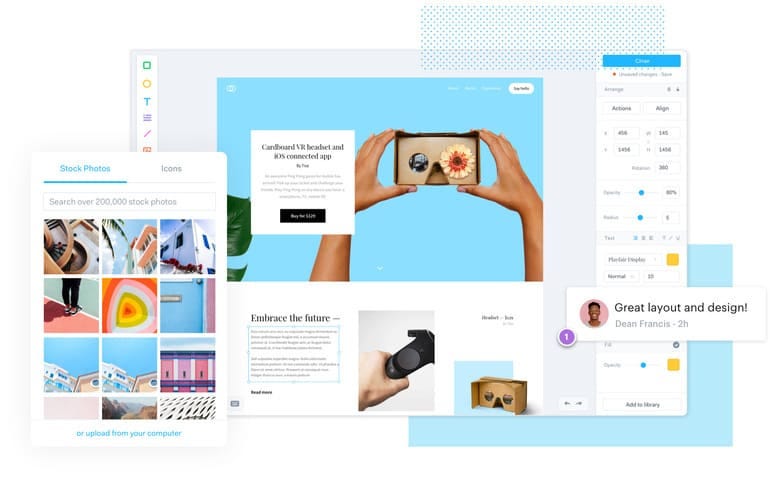
Marvel improves designers’ lives in the product prototyping phase. With dynamic mockups and live user testing capabilities, they can immediately put their ideas to the test without technical constraints. The automated and easy-to-design mockups allow them to leverage the full potential of their ideas. At the same time, real-time visual feedback from users allows them to understand pain points and engage with them. All this will help you design a product that solves real-world problems.
UxPin
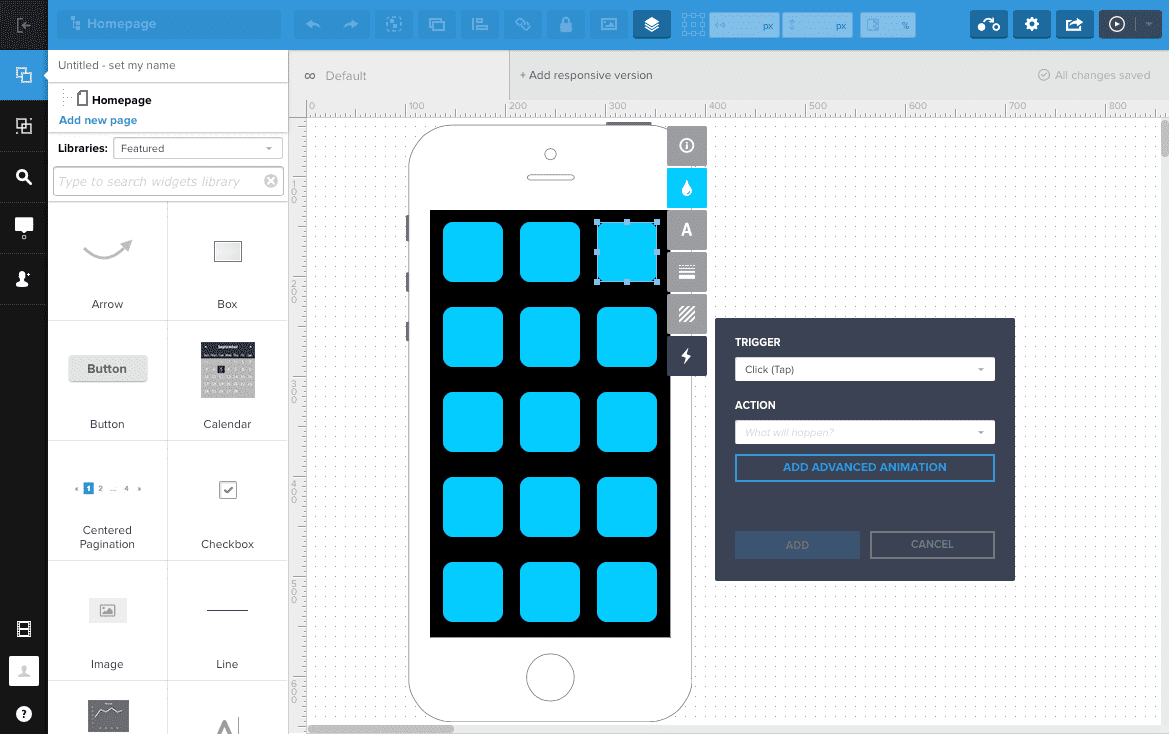
UxPin dramatically speeds up the work of UI designers with code-ready prototyping. Based on a merge technology, this platform allows them to create beautiful visual models that already have embedded, working code. This way, they can test them out directly with their users. Besides prototyping features, designers can also easily share and communicate their creations to collect feedback. It’s a platform that makes prototyping quick and easy.
Uizar
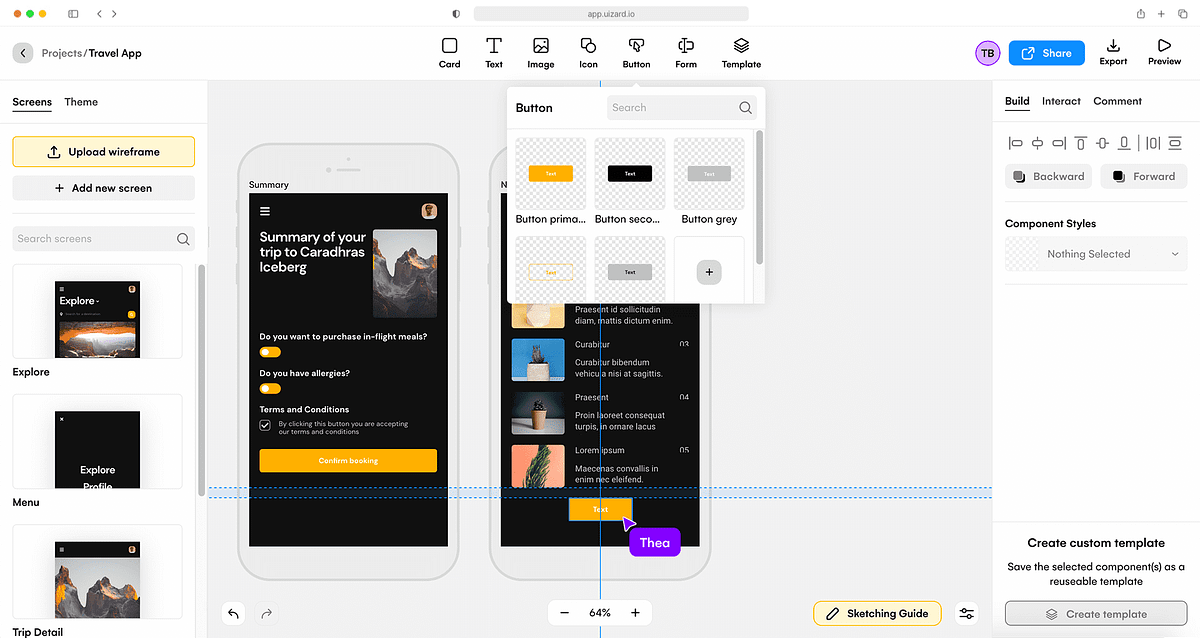
Uizar seeks to make prototyping as easy and simple as possible. Designers can start from a low-fidelity wireframe to quickly turn it into a quality prototype and almost finished product. With an intuitive drag and drop interface, they can easily assemble elements and experiment with new UI models and structures. Numerous templates also ensure that they never run out of ideas to improve the user experience. Thanks to Uizar, anyone can start prototyping.
Design collaborative tool
Mural
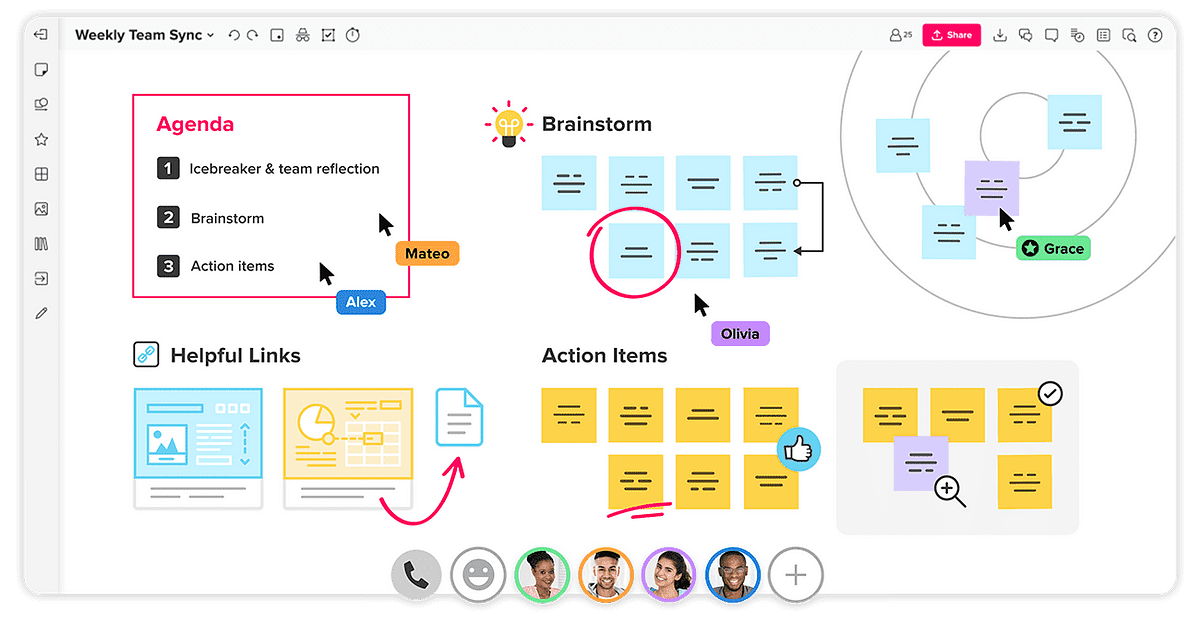
Mural provides designers with a common whiteboard where they can visually communicate their thought processes. On the same interface, users can add ideas, place icons or images, and draw charts. They can then bring all their ideas together in a single framework, be it a table, a diagram, or a spiral. They can also plan structured or open meeting formats to discuss their creations. Mural easily replaces whiteboards in schools with dynamic and customizable features.
Milanote

Milanote specifically highlights the value of collaboration between design teams. Thi platform provides a common interface where they can share their media and designs, add text descriptions, and define the next steps for the project. With creative elements and task lists on the same collaboration board, they can quickly agree on design prototypes, persona models, or journey mapping to move forward. With all this, they have the perfect mood board and design brief in their hands to create their dream product.
Miro
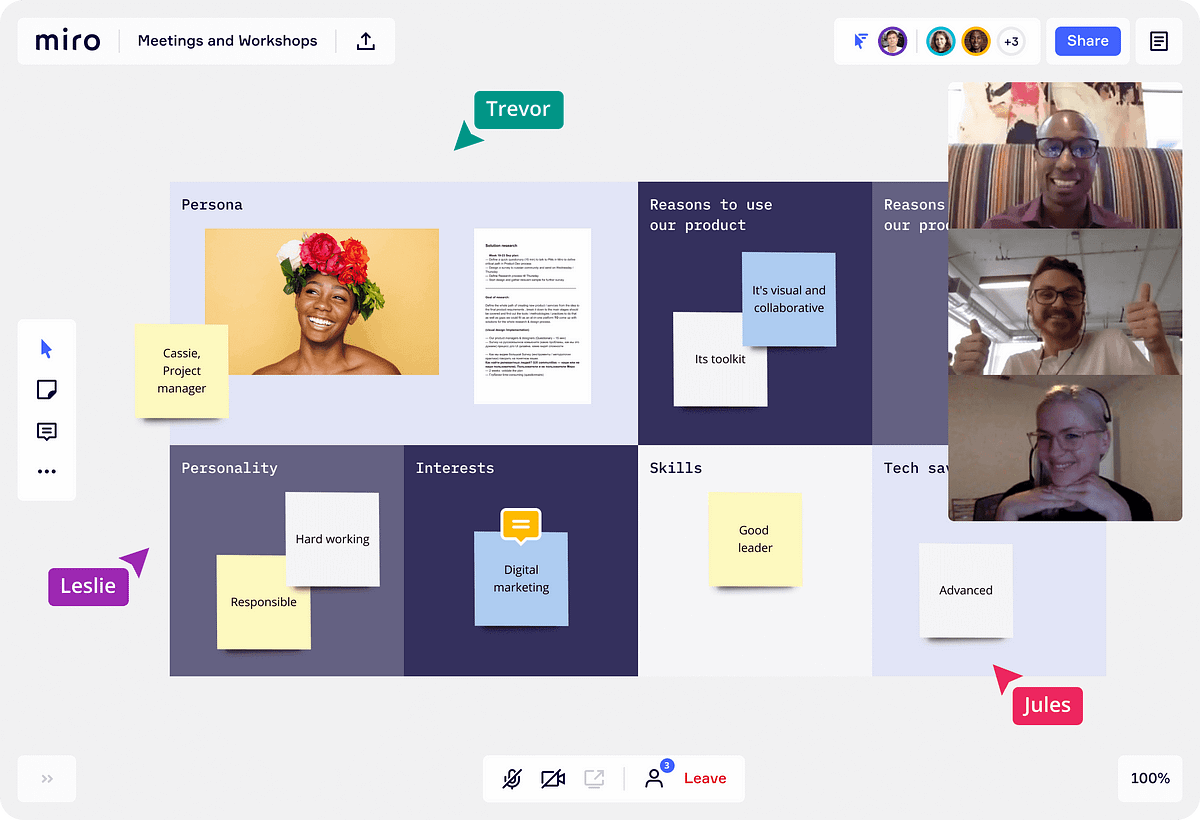
Miro wants to achieve the same goal, but with a 100% customizable whiteboard. Design teams can freely organize their brainstorming sessions, share their journey mapping, or present their wireframes or prototypes, using only simple, colorful, and easy to assemble design elements. During meetings, they can write their ideas on the board and turn them into visually appealing and impactful action plans. Miro also combines mindmaps with task lists to work as a team on the same interface.
In this way, these solutions appeal to designers’ most human and innovative spirit!

